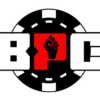Bankroll management in Pot Limit Omaha is one of the most overlooked aspects of the game. Because PLO is a fast-paced “action game” it often attracts gamblers and adrenalin junkies who are more interested in the possibility of getting lucky and making lots of money fast than protecting themselves against the possibility of a bad run of cards from the poker gods.
You don’t want to rely on luck to beat the games, you want to rely on skill. When you’re winning because you’re the best player at the table you can keep making money indefinitely and even turn poker into a long-term career, but if you’re winning because you’re getting lucky it’s only a matter of time before it all comes crumbling down and your bankroll is obliterated overnight.
Because PLO is a much “higher variance” game, however, we recommend you try to keep at least 40 buy-ins in your bankroll for whatever game you’re choosing to play. That means if you’re currently playing the $50 PLO cash games then you should stick to those stakes until you have built your bankroll up to $4000, at which point it would be a suitable time to move up to the PLO $100 game.
By sticking to these guidelines, you will almost eliminate the possibility of going broke and your skill will shine through in the long run. Remember though, if you were to go through an unlucky streak and your bankroll went down below $2000 you would want to switch to PLO $25. By always moving down as your bankroll shrinks it will be almost impossible to go broke.
On the other hand, the absolute worst thing you can do, and the sign of a gambler and not a poker player, is to move up when you start losing rather than moving down. It’s a typical human reaction, to try to chase your losses by moving to bigger stakes. The problem with this strategy is that if it doesn’t work, and at least half the time it won’t, you’ll end up going broke extremely quickly and losing everything you might have worked months to build up.
MINDSET FOR VARIANCE
Variance would be any event that departs from your expectation. In poker, you usually get your money in with varying degrees of equity but you will generally either win or lose by the river. Let’s say you get all in on the flop with top set against your opponents open-ended straight draw. You are roughly an 80% favorite and the pot is $100. Your “expectation” is $80 over the long run, but in this particular hand you will always either win $100 or end up with $0.
Getting into that situation repeatedly would earn you a lot of money over time, but if you were unlucky you might even lose 3 times in a row. That would be what we call variance and it happens more often and more brutally than some people realize.
In PLO, you can be the best player at the table and because of a bad run of variance, you might still lose 5, 10 or even 15 buy-ins. The more situations where you get your money in close to 50/50 the higher the variance will be. Coin flips in Omaha are extremely common – far more so than in NL Hold’em– and because of that, you want to have a larger bankroll to deal with the swings the game inevitably delivers.
You should mentally prepare yourself for major swings. You will encounter them on a regular basis, which is quite normal in PLO.
Don’t immediately start doubting your own game if you lose 10 buy-ins or more. It might be due to a swing, it might be due to your game. You should always analyze your sessions and post hands in our hand evaluation forums to get some expert views on your game.
The danger of going on tilt is much higher in PLO. The swings can be devastating and you might be tempted to play hands that you shouldn’t play. Set yourself a stop-loss limit to protect your bankroll.



